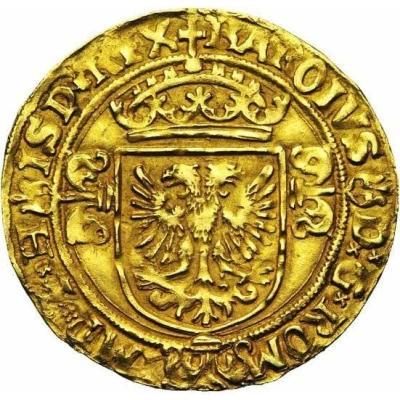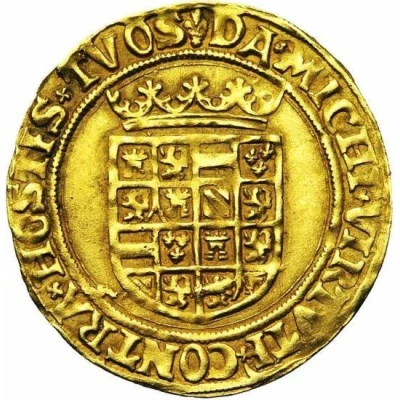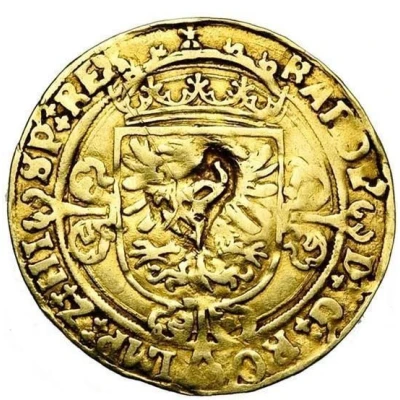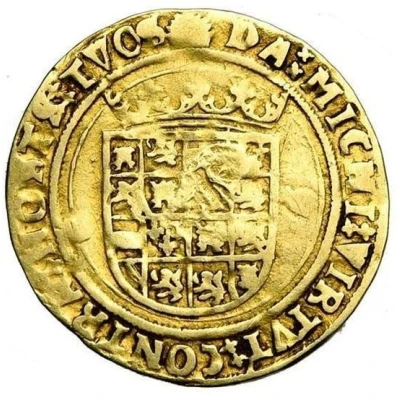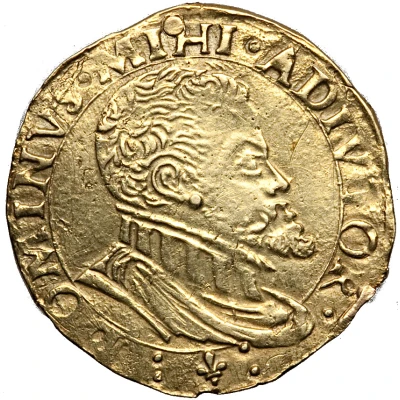
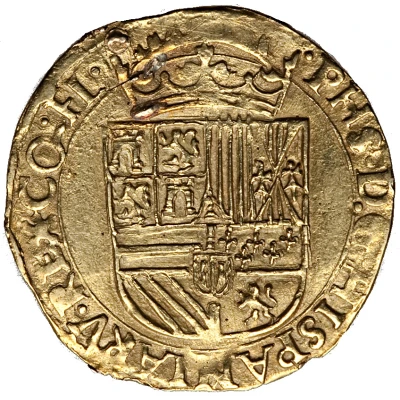

Obverse © Heritage Auctions – Reverse © Heritage Auctions Europe
½ Gold Real - Philip II ND
| Gold (.750) | 3.5 g | 23 mm |
| Issuer | Spanish Netherlands (County of Flanders, Belgian States) |
|---|---|
| King | Philip II (1556-1598) |
| Type | Standard circulation coin |
| Years | 1559-1567 |
| Value | ½ Real (1.5) |
| Currency | Gulden (1506-1713) |
| Composition | Gold (.750) |
| Weight | 3.5 g |
| Diameter | 23 mm |
| Shape | Round (irregular) |
| Technique | Hammered |
| Demonetized | Yes |
| Updated | 2024-10-04 |
| Numista | N#126434 |
|---|---|
| Rarity index | 100% |
Reverse
Crowned Spanish arms.
Script: Latin
Lettering: • PHS • D:G • HISP • REX • COMES • FL •
Comment
"Flanders. Philip II of Spain gold 1/2 Real ND (1555-98), Bruges Mint, variety without ANG REX, Flanders, originally part of the Burgundian inheritance, fell to the Hapsburgs on the death of the last duke of Burgundy in 1477. On the emperor Charles's abdication in 1555, the Hapsburg inheritance was divided between the Austrian and Spanish branches, and the Netherlands passed to Philip II, a dour and unbending Catholic. His attempts to extirpate heresy caused the northern provinces to rise in revolt and, after many years of struggle, secure their independence as the United Provinces. The southern provinces, including Flanders, remained Catholic and loyal to king Philip. This type is known with and without "ANG REX" in the obverse legend, marking the king's brief marriage to Mary of England. The Spanish hapsburgs ruled Flanders until 1700, fending off repeated attempts by the king of France to annex it. The area is now divided between France and Belgium.Interesting fact
One interesting fact about the ½ Gold Real - Philip II ND (1559-1567) coin from Spanish Netherlands (County of Flanders, Belgian States) is that it was minted during a time of great economic and political change in the region. The coin was issued during the reign of Philip II of Spain, who was also the ruler of the Netherlands at the time. The coin's minting was likely a response to the growing economic influence of the Dutch provinces, which were becoming increasingly important in global trade and commerce. The coin's gold content and weight also reflect the value of gold during this period, which was a valuable and sought-after metal for currency.
